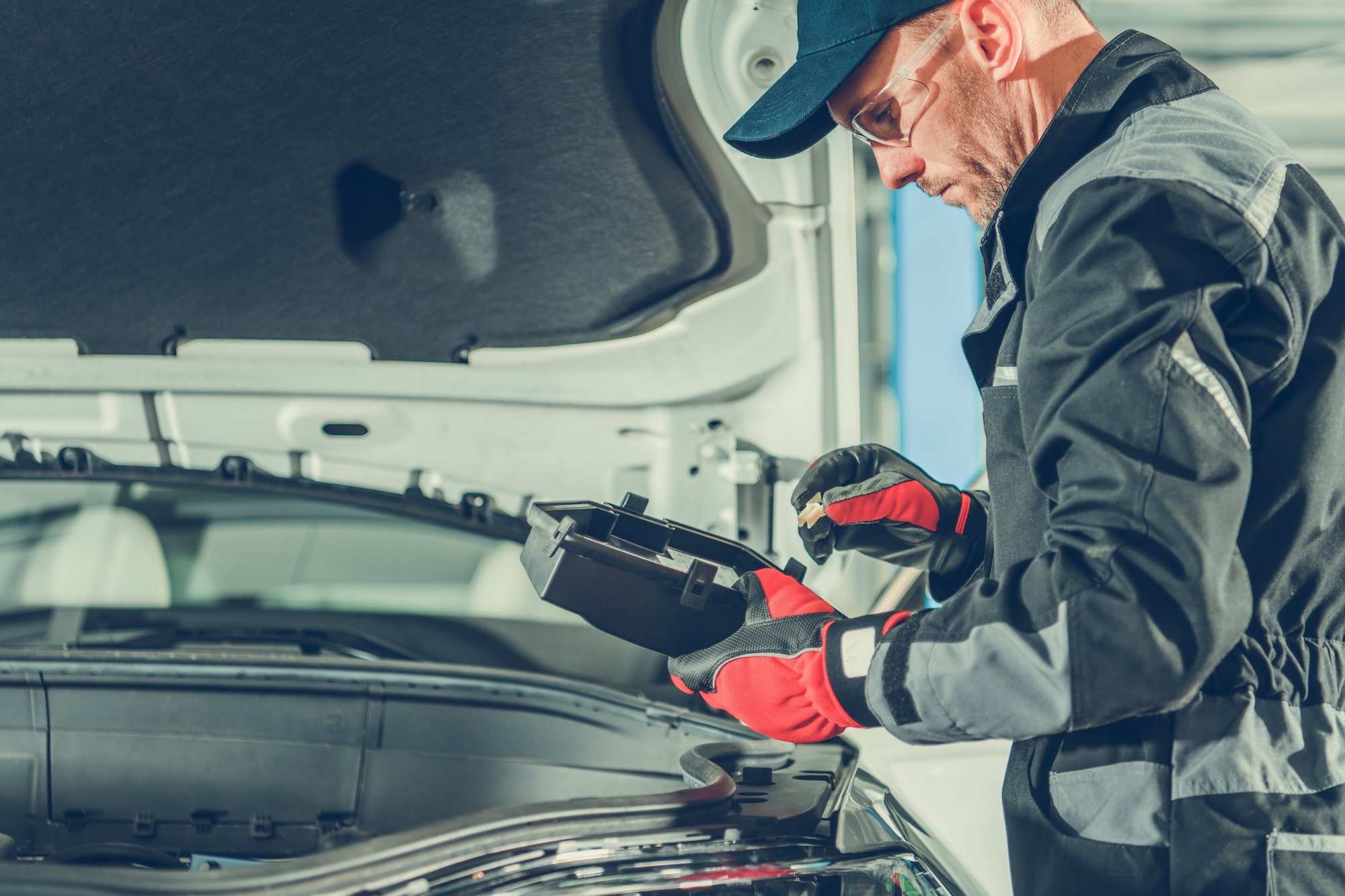Having your car break down while traveling away from home can be a frightening experience. But when the temperatures outside are freezing, and snow and ice cover the road, the reality of being stranded can be even more alarming. Before finding yourself in this predicament, you can take steps to prep your vehicle ahead of time to ensure it is winter-weather-ready. Consider the following 5 tips for keeping your car in top condition as the seasons change.
#1. Check Your Battery
According to Kelley Blue Book (KBB), the average battery lifespan for a car, truck, and SUV is about six years. However, several factors can affect a battery’s longevity and cause it to fail sooner. One factor is extreme temperatures.
During the winter, the temperature drops can cause the battery to work overtime. In fact, battery strength can decrease by nearly 35 percent when temperatures outdoors fall to 32 degrees Fahrenheit and rise to 60 percent at 0 degrees Fahrenheit. What does this mean exactly?
If your car’s battery is old or is showing signs it’s going bad; your engine is more likely to stall and experience a winter car breakdown. Why? Batteries already have more difficulty producing a charge when it’s cold. So a substantial drop in temperatures can lead to a car battery producing less energy to run electrical components or power the starter motor to get the engine running. Hence, testing your battery and replacing it before the colder weather arrives is critical to assuring it does not die or diminish your car’s performance.
Schedule an appointment to have your certified mechanic inspect your battery or take your car to an automotive retail store like AutoZone for a free battery test. If you need a new one, RepairPal notes the average battery replacement cost is between $345 and $355.
#2. Inspect Your Tires
When snow and ice cover the road, coming to a complete stop without skidding can be challenging. But when you add worn treads or low tire pressure to the equation, a car’s ability to grip the road diminishes even more. Before the wintery mix of snow and ice hits your region, check the condition of your tires to ensure they are travel-safe.
Start by inspecting the tread depth. The easiest way to measure it is by sticking a penny upside down in the tread. If you see the top of President Lincoln’s head sticking out, you’ll want to put a new set of tires at the top of your to-buy list. Also, assess your tire pressure. Maintaining the manufacturer’s recommended tire pressure supports good traction. However, your risk of braking and handling issues increases when the pressure gets too low.
If you need to replace your tires, one of the most proactive steps you can take is to invest in ones specifically designed for winter. Why aren’t all-season tires sufficient? Consumer Reports explains that “winter/snow tires easily outperform most all-season tires” because they offer deeper treads and rubber compounds. And by installing snow tires, you can decrease winter-related accidents, improve your safety, and boost your confidence for driving in the snow.
#3. Monitor Coolant Levels
Engine coolant acts as an antifreeze and is necessary for preventing your engine from freezing in the winter. So before the weather changes, you want to check your levels to ensure the engine runs properly during winter. A certified mechanic can inspect the fluid, look for rusty discoloration or floating debris, and replace it when necessary. Recommendations typically suggest draining and changing the coolant every two years or 30,000 miles. However, you’ll find the exact information inside your car’s owner’s manual.
#4. Keep Your Tank Full
Although rising gas prices can make filling your gas tank more costly and frustrating, neglecting it in the winter can lead to severe consequences. Fuel is crucial to keeping your car running and staying warm during a breakdown. But a near-empty tank in cold weather can freeze your fuel lines and create condensation in your tank. As a result, the fuel pump can suffer damage. Therefore, keeping your tank full is critical to preventing expensive car issues and ensuring you can stay warm should a breakdown occur.
#5. Avoid Driving in Severe Weather
When Mother Nature rears her ugly head, law enforcement often recommends staying off the road and limiting your time outdoors. Rapid changes in temperature and precipitation can lead to unexpected road condition shifts, causing an increase in motor vehicle accidents. So, before hitting the road, monitor what’s happening outside. If you can avoid driving in inclement weather, it’s usually best to do so.
Protect Your Car All Winter with an Auto Warranty
While getting your car winter-ready means staying on top of routine maintenance, it also means investing in a solid vehicle protection plan. With a contract that fits your needs and budget, you can better manage high-cost car repairs and worry less about being stranded because of a winter car breakdown. Instead, you can rest easy knowing your contract includes 24/7 roadside assistance and part replacements to help you back on the road quickly.
Need help deciding which car warranty program is best for you? Check out our top providers here to begin your search.




